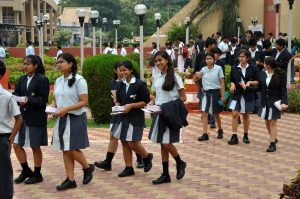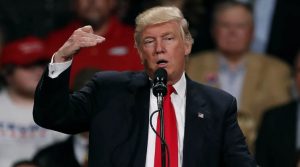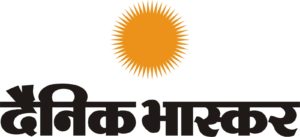
14-12-2016 (Important News Clippings)
To Download Click Here
India’s school emergency
Rajasthan’s campaign to fix schools will create prosperity and equality of opportunity

This wonderful story applies to school education policy. Learning, teaching, management, governance and feedback are the same words but they now mean different things.
India needs to re-imagine school education because rote learning is less important in a world of always-on internet and education needs to target the International Baccalaureate curriculum learner profile; curious, confident, risk taker, team player, communicator, reflective, etc. I guess this validates poet William Butler Yeats who wrote “education is not the filling of a bucket but the lighting of a fire”.This transition is complicated by massive change in the world of work where automation means that reading, writing, arithmetic and soft skills are becoming the most important employability skills. India has licked the quantity problem; Class 10 is the new Class 8 and soon Class 12 will be the new Class 10 for lazy employer job filtering.
All these changes make teachers and their training even more important. We know that technology matters in education but we don’t know how. Even though we are probably a few iterations away from the full impact of e-learning, it’s important to keep an eye on the horizon.The 2016 Olympic silver medallist in javelin was Julius Yego, a Kenyan who taught himself how to throw by watching YouTube videos. All governments talk about physical infrastructure but any politician can tell you that schools as “infrastructure of opportunity” are top of mind for citizens and voters.
Most past policy interventions – including in Rajasthan where we have 18 million children who should be in school of which 90% go to school – have focused on the three important inputs of teacher qualifications, teacher salaries and class sizes. While these continue to be important, research is iffy about their contribution to learning outcomes and suggests moving to more difficult, fundamental issues like governance.
Determined to make the public school system deliver on its promise to children, Rajasthan put together a three step transformation plan: building management capabilities, strengthening governance structures and ensuring continuous feedback. The first involved a focus on school integration in each Panchayat for grades 1-12 called Adarsh schools and for grades 1-8 called Utkrisht schools with improved infrastructure, full staffing, and a focus on school monitoring by devising information and communication systems for inter-department and department to field alignment.This move has ensured higher utilisation of resources, better supervision of schools and greater accountability of staff.
The second involved quarterly state wide reviews, district wise bi-monthly reviews and monthly meetings at schools, resulting in continuous performance monitoring. The third involved using social media for feedback, IT for fund utilisation and peer review for teachers that included sustained training of all personnel from the bottom up.This is showing results; the class 10 board exam pass rate has improved from 58% to 72% in government schools and in Class 12 arts, the government school pass rate is higher than that of private schools.
Teaching vacancies have been reduced by 35% (from 60% to 25%) with over 1 lakh teachers promoted or transferred via a new and transparent counselling process. The most important metric, community faith in public education, is reflected in the increase of government school enrollment by 90 lakh in the last three years. A recent state wide parent-teacher meeting recorded 70% parent attendance.
Community generosity in cash and kind donations to local schools has helped fill resource and infrastructure gaps. While I am delighted about the buzz in education policy makers, schools and parents, I realise that much work is yet to be done.India is in a school emergency because 10 lakh young people will join the labour force every month for 10 years and many of them will not have the ability to earn living wages because their school let them down. Many vested interests would like to perpetuate the current low-level equilibrium of our schools, but the status quo can be broken with political will, community support, transparency, communication, measurement, and much else.
The Centre has begun to help states with the recent decision to devolve some decisions and remove a focus on inputs under the overly centralised Right to Education Act that fights yesterday’s war of enrollment.
I read recently that private prisons are a huge growth industry in America and they have found that the best predictor of future growth – how many cells and prisoners are going to be needed in which area in 15 years – is a simple algorithm based on asking what percentage of 11 year olds can’t read. You can’t say that a literate society has no criminality but they seem to have found a real correlation. Every society has a different context but I will submit that a similar metric – what percentage of our 11 year olds can read – is the best predictor of India’s sustained prosperity and equality of opportunity.
First clean up political funding to mount a credible attack on corruption
To mount a credible attack on corruption, the first step is to clean up political funding. If the Augean stables of Indian politics remain as filthy as they are today, all other Herculean labours to improve collective life will come to nought.
We Indians are proud of our democracy. But few of us bother to fund a political party of our choice. Either we expect democratic politics to be a freebie or we leave it to the parties to raise the money they need as they deem fit. The danger is not just that old saw, he who pays the piper calls the tune, that we leave political parties to the undue influence of those who fund them. The danger extends to undermining the integrity of our political system as a whole.
State Funding Not Viable
Politics costs a lot of money. A party machinery has to be kept going: offices, stationery, personnel, travel, telecommunications, transport, publications, meetings, public meetings, posters, hoardings, advertising, rallies and mega rallies for which you hire trucks and truckloads of people. Political workers have to be paid on a regular basis. Then there are elections and their hectic campaigns.
In theory, parties get voluntary contributions: their audited accounts claim 80% of their funds come from donations smaller than the threshold.`20,000, contributions larger than which have to be paid by cheque. In practice, parties show only a fraction of their actual receipts as income and raise the bulk of their funding through loot of the exchequer, extortion and sale of patronage.
Cost padding of state-funded projects and government procurement is how you loot the exchequer, if not by lowering standards to save on material and quality. Extracting money from any project developer or vendor of equipment/arms for the process of approval to go through is extortion. Using discretion to impose antidumping duties on imports, allocate natural resources or bank loans for cost-inflated projects is sale of patronage, which extends to patronising the theft of electricity or land-grab or other crime by goons of the ruling party or its allies.
Such ways of extracting funding cannot be done without the collusion of the civil servants involved. This suborns the service, several of whose members then go on to loot like their political masters. Accountability of the administrative machinery goes for a toss.
The loot goes to political parties via individual politicians, to whom a significant part sticks, to build private fortunes and individual war chests they can use to gain influence. Politicians have no incentive to change the system. But change, it must.
In what direction?
People have tended to focus on funding. There have been many calls for the state to fund political parties and elections. This is neither necessary nor sufficient.
Suppose the government does fund parties. What prevents them from supplementing state money with funds sourced in the traditional manner? A more fundamental objection is that India collects too little tax, less than 17% of GDP. If money is diverted from this small kitty to fund politics, the result would be perverse: education, healthcare, the justice system and infrastructure would continue to stay underfunded, even as funds are diverted to an activity that gets financed aplenty.
Transparency is the Key
The solution is to focus on expenditure. Scrap expenditure limits that invite fake compliance. The more popular a party, the greater its ability to raise and spend money.Why curb expenditure, when citizens can be sensitised against the use of money power? Rather, the focus should be on transparency.Get every party to declare its expenditure at the level of the polling booth, panchayat, block, municipality, district, state and nation.
Let rival parties, NGOs, the media, anyone challenge the figure and let the party defend or amend its original claim. The Election Commission (EC) should moderate this contestation and finalise the expenditure figure at every level.
Then, parties should be asked where they got the money to spend. Every rupee should be traceable to the donor identified by PAN or Aadhaar. Donations should be accounted for in the cloud in real time. Technology makes this a simple enough task. Will this prevent some big company from sponsoring a major politician with untaxed money? It will not, but to the extent the money shows up as expenditure and has to be linked to a source, the task would be more difficult. Elections whose accounts are found to have been falsified should be countermanded.
Another piece of reform that would clean up politics is development of a corporate bond market. If projects or acquisitions are funded by publicly traded bonds on whose viability multiple analysts would keep tabs and comment, rather than by bank loans sanctioned by a handful of people who can be ‘persuaded’ to overlook inflated project costs, companies would have less unaccounted money with which to fund politicians.
Independent media and a functional judicial system are imperative as well. But the ultimate guarantee of clean politics is an empowered, vigilant citizenry.
T K Arun Editor, Opinion, The Economic Times.
हरित क्रांति को खत्म कर देगा गेहूं का आयात
Rooting out graft
A strong Lokpal and protection of whistleblowers hold the key to eliminating corruption.
 If we go by Prime Minister Narendra Modi’s televised announcement on November 8, the reason to implement demonetisation on such a massive scale was to fight corruption. The narrative has changed somewhat lately and the need to modernise the Indian economy and move towards a cashless society have been presented as additional factors. But the need to counter corruption clearly remains a priority.
If we go by Prime Minister Narendra Modi’s televised announcement on November 8, the reason to implement demonetisation on such a massive scale was to fight corruption. The narrative has changed somewhat lately and the need to modernise the Indian economy and move towards a cashless society have been presented as additional factors. But the need to counter corruption clearly remains a priority.
Modi’s electoral success in 2014 took place in the wake of a formidable anti-corruption mobilisation initiated in 2011 by Anna Hazare. At that time, thousands of people demanded the creation of a Lokpal. This was one of the most popular movements in post-independence India — it called to mind the movement Jayaprakash Narayan had spearheaded in the 1970s. As Gujarat CM, Modi supported the creation of Lokpal in an open letter to Hazare on April 11, 2011. The Lokpal Bill was passed in Parliament in December 2013 as the Lokpal and Lokayukta Act. A little less than six months later, a new government was in charge. But three years later, there is still no Lokpal.
The government has argued that the search committee has not been formed because there has been no leader of Opposition in the Lok Sabha. Last month, the Supreme Court did not appreciate this reasoning while examining a PIL filed by the NGO Common Cause. The bench headed by Chief Justice T.S. Thakur asked Attorney General Mukul Rohatgi: “When you say the government is committed to cleansing corruption, then this (Lokpal) is the step in the right direction. Why should there be a feeling that the government is dragging the feet? For the last two and a half years, there is no leader of Opposition. This position is likely to continue for next two and a half years. Will you allow the law to become redundant, just because there is no leader of Opposition?” The Court heard the matter on December 7 again, and asked Rohatgi to place before it the Parliamentary Standing Committee report recommending that the law to appoint the Lokpal should be amended. The Court is supposed to hear the matter again on December 14 but voting for any amendment to the law in Parliament will probably take time.
Another Lokpal is also likely to take time and may even become a dead letter — the Delhi Jan Lokpal, which Prashant Bhushan and Shanti Bhushan (who had introduced the first Lokpal Bill in 1968) called a “jokepal” because of the dilution of the project they had conceived with Arvind Kejriwal during the Anna Hazare-led movement. This bill was passed by the Delhi assembly in December 2015, but it was returned by the Centre — along with 13 other bills in June.
In the absence of Lokpals, RTI activists remain particularly important among those exposing corruption cases the most effectively. The Right To Information Act, that was passed in 2005, is, despite all its loopholes, one of the major contributions of the UPA government to, as the Act itself says, “promoting transparency and accountability in the working of every public authority”. However, the implementation of the Act has been dogged by two difficulties, which the government can address. First, according to Venkatesh Nayak, the co-convenor of the National Campaign for People’s Right to Information (NCPRI) and coordinator of Access to Justice Programme at the Commonwealth Human Rights Initiative, about 1.8 lakh appeals and complaints were pending before the 29 information commissions across the country in 2014-15. This is either due to lack of response from the public officers to demands for information or unreasonable delays in providing information. This problem can be partially solved by reducing the number of vacancies, which represent 24 per cent of the 149 posts of information commissioners across the country.
Secondly, RTI activists are under immense pressure. In 2011, the Central Information Commission had passed a resolution saying that “if it receive(d) a complaint regarding assault or murder of an information seeker, it will examine the pending RTI applications of the victim and order the concerned department(s) to publish the requested information suo moto on their website as per the provisions of law”. This resolution has not been systematically implemented and the situation has deteriorated even more. According to NCPRI data, till date, 146 RTI activists have been harassed (death threats being the most common form of harassment), 118 have been assaulted (many of them were severely wounded) and more than 50 have died (including four cases of suicide and half a dozen killings possibly unrelated to the cause they were defending). RTI activists are under so much pressure because they deal with serious forms of corruption, including land transactions. To protect them, the Whistleblower Protection Act (WBP Act) was passed in 2014 by the UPA government. It turns out, however, that it needs to be upgraded in several respects. The NCPRI has suggested 14 significant avenues for improvement, including the inclusion of a definition of “victimisation” in the Act and the addition of a clause permitting a whistleblower to publicise allegations of wrongdoing through the media.
The Asia Centre for Human Rights has also made three recommendations — mandatory and immediate registration of FIR on complaints about the use of force or attacks against RTI activists; inquiry by a police officer not below the rank of deputy superintendent of police within three months; trial of the accused within six months if the offence is established by investigation. These changes aiming to protect the lives of the whistleblowers have not been introduced. But amendments were introduced in Parliament in May 2015 to dilute the WBP Act. One of them implied that the Official Secrets Act, 1923 applied to whistleblowers; this means they can be prosecuted for possessing government documents on which their complained were based. The amendments also excluded from the ambit of inquiry any matter of “public interest” affecting the “sovereignty and integrity of India” or matters related to “commercial confidence”.
In August 2015, Modi used an Independence Day speech to make his point: “Corruption had eaten away our country like termites. So if I have stopped so much corruption, there will, of course, be many who will curse me. Only those who looted the nation are not enthused by this government”. While he was using a past tense in his first sentence, Modi’s demonetisation drive shows that corruption remains a problem. The magnitude of the challenge would indeed justify the creation of a proper Lokpal and the protection of the whistleblowers.
Date: 13-12-16
Raja-Mandala
The challenge of automata
India must facilitate investments in artificial intelligence and be prepared to address the negative fallouts of the technological revolution.

Trump did not name India or the companies, but the message was loud and clear. The US policy on H-1B visas has been under fire from many quarters of the US establishment — from the IT trade unions to the liberal New York Times, which ran a series of stories last year, on how the Indian companies had gamed the US visa policy to the detriment of American workers. As they come to terms with the new political reality shaping the insourcing and outsourcing of work in America, Delhi and Bengaluru must also look beyond Trump to focus on the unfolding technological transformation that will begin to test the business model of the Indian IT industry. But first to America, where Trump has signaled his intent to follow through his rhetoric over the past one year on protecting American jobs. Through the presidential campaign, Trump railed against the American financial and industrial elites for pursuing globalisation despite its massive job losses in America. By promising to overturn trade agreements and penalising American companies moving jobs abroad, Trump secured that small edge over his Democratic rival, Hillary Clinton, in the mid-western industrial heartland of America. Although Clinton won nearly 2.8 million votes more than Trump across America, she lost narrowly to Trump in Michigan (by 10,000 votes), Wisconsin (22,000) and Pennsylvania (45,000). By edging past Clinton in these states, Trump secured a majority in the electoral college and the presidency. Since his election, Trump has made it quite clear that he will stick by his hard line on saving American jobs and stand by those who propelled him to the White House.
Trump has nominated Senator Jeff Sessions, a strong opponent of H1-B visa policy, to be his attorney general. Last year, Sessions had introduced a bill in the Senate for a comprehensive reform of the H 1-B visa system. Trump also announced a deal with Carrier, a company that makes air conditioners, to keep its facility in Indiana. During his campaign, Trump had attacked Carrier for its plans to move the plant to Mexico. On the left, many have dismissed the Carrier deal as a cosmetic gesture of political support to American workers. On the right, Trump has been criticised for abandoning free market principles and “arm twisting” Carrier. The Wall Street Journal, the voice of American capitalism, warned that Trump’s deal with Carrier would reduce the company’s ability to compete in the global market and will eventually cost more American jobs. The journal argued that “Trump’s Carrier squeeze might even cost more US jobs if it makes CEOs more reluctant to build plants in the US because it would be politically difficult to close them.” But all recent surveys show strong public support to Trump’s attempts to save American jobs.
In an ironic twist to the entire episode, Carrier announced that its new investments in the Indiana facility will focus on automating the plant and replacing the workers with robots. Over the long term the prospect that workers could be replaced with machines could be far more consequential than the current intense arguments between protectionists and globalisers. The rapid advances in robotics, artificial intelligence (AI), and the integration of physical and biological worlds points to what many despair as a job-less future. In the past technological transformations created more jobs than those they eliminated. This time around, it could be different. Pessimists warn of mass unemployment around the world as the share of labour costs in production begins to decline precipitously.
If Trump can’t get back manufacturing jobs into America, the Indian IT industry might find it hard to sustain its business model based on arbitrage of skilled labour. American political backlash against globalisation is only part of Bengaluru’s problem. For automation threatens to eliminate not just many current jobs in the Indian IT industry but a range of well-paying white collar occupations around the world.
Delhi and Bengaluru must therefore start preparing India for the so-called fourth industrial revolution and its huge social and political implications. Together they must address a twin-challenge: On the one hand, they must facilitate massive investments in new technologies like robotics and AI and reduce the growing gap between Indian capabilities and other major economies. On the other hand, Delhi and Bengaluru must also mitigate the negative consequences of the technological revolution as well as imagine its many possibilities for transforming India. Complacence on technology policy is no longer an option.
तूफान से मुकाबला
सोमवार को चेन्नई तट पर टक्कर मारने वाले चक्रवाती तूफान वरदा से जो नुकसान हुआ है, उसकी पूरी जानकारी आने में अभी वक्त लग सकता है। 2016 में भारतीय उपमहाद्वीप की ओर बढ़ने वाला यह आठवां बड़ा तूफान है और कई मामलों में सबसे खतरनाक भी है। इसके पहले के सभी तूफान एक तो इतनी अधिक तीव्रता के नहीं थे, दूसरे वे या तो तट पर पहंुचने से पहले ही कमजोर हो गए, या उन्होंने रास्ता बदल लिया। अच्छी बात यह है कि इस बार इसे लेकर काफी सतर्कता बरती गई थी। तूफान चेतावनी प्रणाली को काफी समय पहले ही सक्रिय कर दिया गया। इसकी सीधी चपेट में आने वाले सभी तटों को समय रहते खाली करवा लेने की खबरें हैं। अंडमान द्वीप समूह में फंसे पर्यटकों को भी तमाम कठिनाइयों के बीच काफी पहले ही निकाल लिया गया। हालांकि जो खबरें आ रही हैं, वे तूफान की जद में पड़ने वाले बड़े शहरों की ही हैं। हमें अभी यह ठीक से नहीं पता कि इस क्षेत्र में तटों के पास मछुआरों के जो गांव हैं, उनकी क्या स्थिति है? ऐसे में, सबसे कठिन काम उन मछुआरों को पहले ही रोकना या वापस लाना होता है, जो गहरे समुद्र में जाकर मछलियां पकड़ते हैं। ऐसे मछुआरे ही चक्रवाती तूफान का सबसे अधिक शिकार बनते हैं। इसके अलावा तटों पर बसी उनकी बस्तियां भी अक्सर ऐसे तूफानों से उजड़ जाती हैं। उम्मीद की जानी चाहिए कि जो चेतावनी प्रणाली चेन्नई में सक्रिय दिखाई दी, वह इन गांवों तक इतनी ही सक्रिय रही होगी, और तूफान के बाद हमें उस तरह की बुरी खबरें नहीं सुनाई देंगी, जैसी ऐसे तूफानों के बाद अक्सर सुनाई देती हैं।
अच्छी बात यह है कि 1999 में ओडिशा के तट से टकराने वाले समुद्री चक्रवात के बाद से चीजें काफी बदली हैं। पारदीप नाम का वह चक्रवात दरअसल एक सुपर साईक्लोन था। वरदा और पारदीप का फर्क इससे समझा जा सकता है कि सोमवार को जब वरदा भारतीय तट से टकराया, तो उसकी गति 150 किलोमीटर प्रति घंटा थी, जबकि पारदीप की गति 260 किलोमीटर प्रति घंटा थी। पारदीप तूफान की चपेट में आने से लगभग दो हजार लोगों को अपनी जान से हाथ धोना पड़ा था। इसके चलते तब लगभग 17 लाख लोग बेघर हो गए थे। फसलों और इमारतों को जो नुकसान हुआ था, वह अलग था। उसके कुछ ही वर्ष बाद आए सुनामी ने भी यह बता दिया था कि तटों की सुरक्षा को गंभीरता से लेना कितना जरूरी है। इसके बाद से सुरक्षा के लिए काफी व्यवस्थाएं की गई हैं। वरदा के टकराने के बाद इन व्यवस्थाओं की परीक्षा भी हो जाएगी। यह ठीक है कि इस बार भी बहुत से पेड़ गिरेंगे, बहुत से इलाकों की फसलें बरबाद होंगी, लेकिन अगर हम जानमाल के नुकसान को कम कर सके, तो यह हमारी बहुत बड़ी कामयाबी होगी।
चक्रवाती तूफान एक प्राकृतिक आपदा है और ऐसी आपदाओं को रोकना संभव नहीं होता। हालांकि दुनिया के कई वैज्ञानिक इस समय एक ऐसा प्रयोग भी कर रहे हैं कि किसी तरह समुद्री चक्रवात को तट से टकराने के काफी पहले ही प्रभावहीन किया जा सके। यह माना जाता है कि अगर किसी तरह चक्रवात की नाभि को तोड़ा जा सके, तो उसे खत्म किया जा सकता है। कुछ वैज्ञानिक इसके लिए बिना पायलट वाला विमान इस्तेमाल करने की योजना बना रहे हैं। पता नहीं है कि यह प्रयोग कब सफल होगा, पर फिलहाल दुनिया के तकरीबन सभी देशों को आए दिन ऐसी आपदा से दो-चार होना पड़ता है। सब जगह ऐसे तूफानों के नुकसान को कम करने का एक ही तरीका होता है, सुरक्षा की ऐसी भरोसेमंद प्रणाली विकसित करना, जो तटवर्ती इलाके की हर बस्ती, हर व्यक्ति तक पहुँचती हो।

